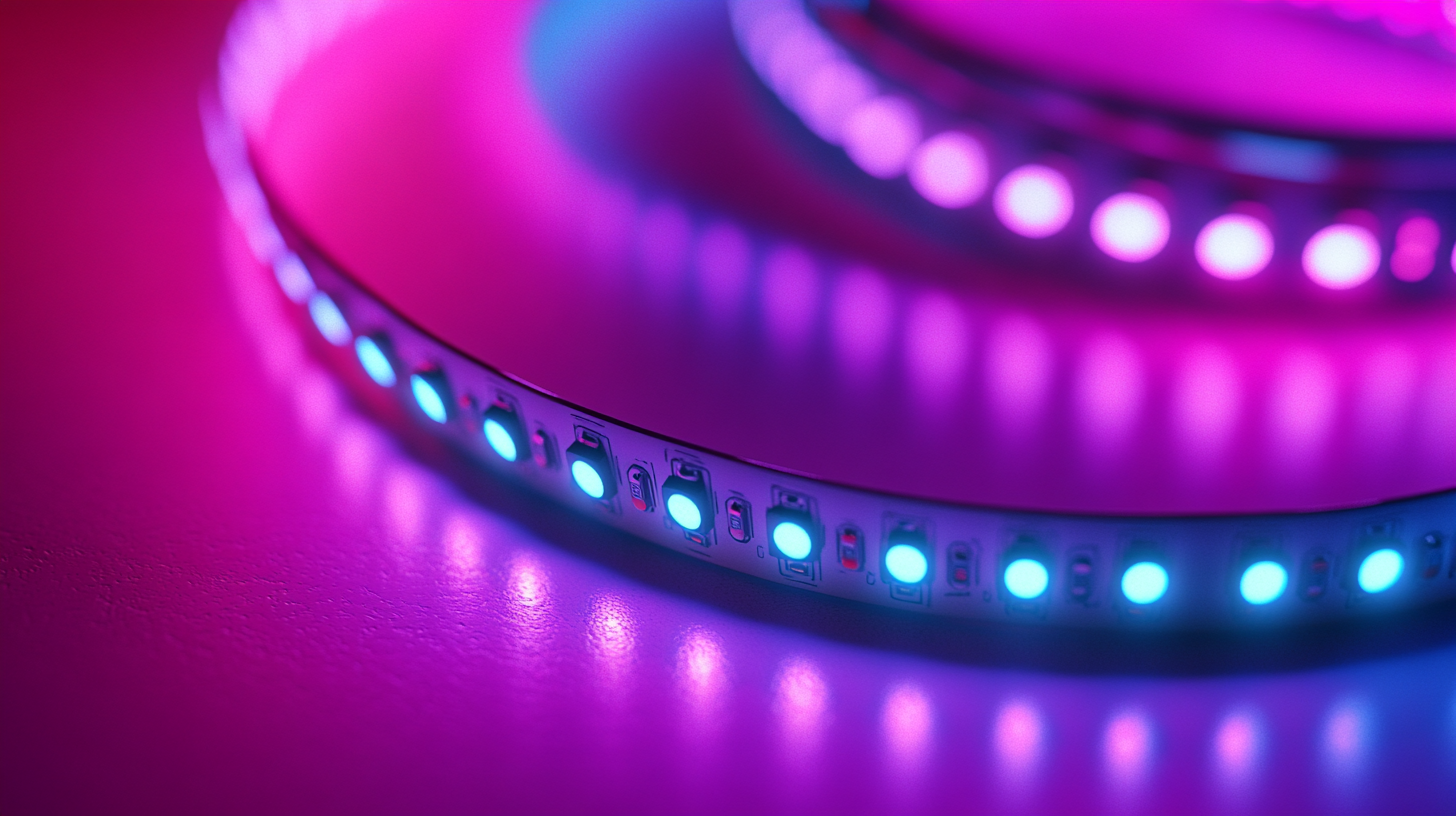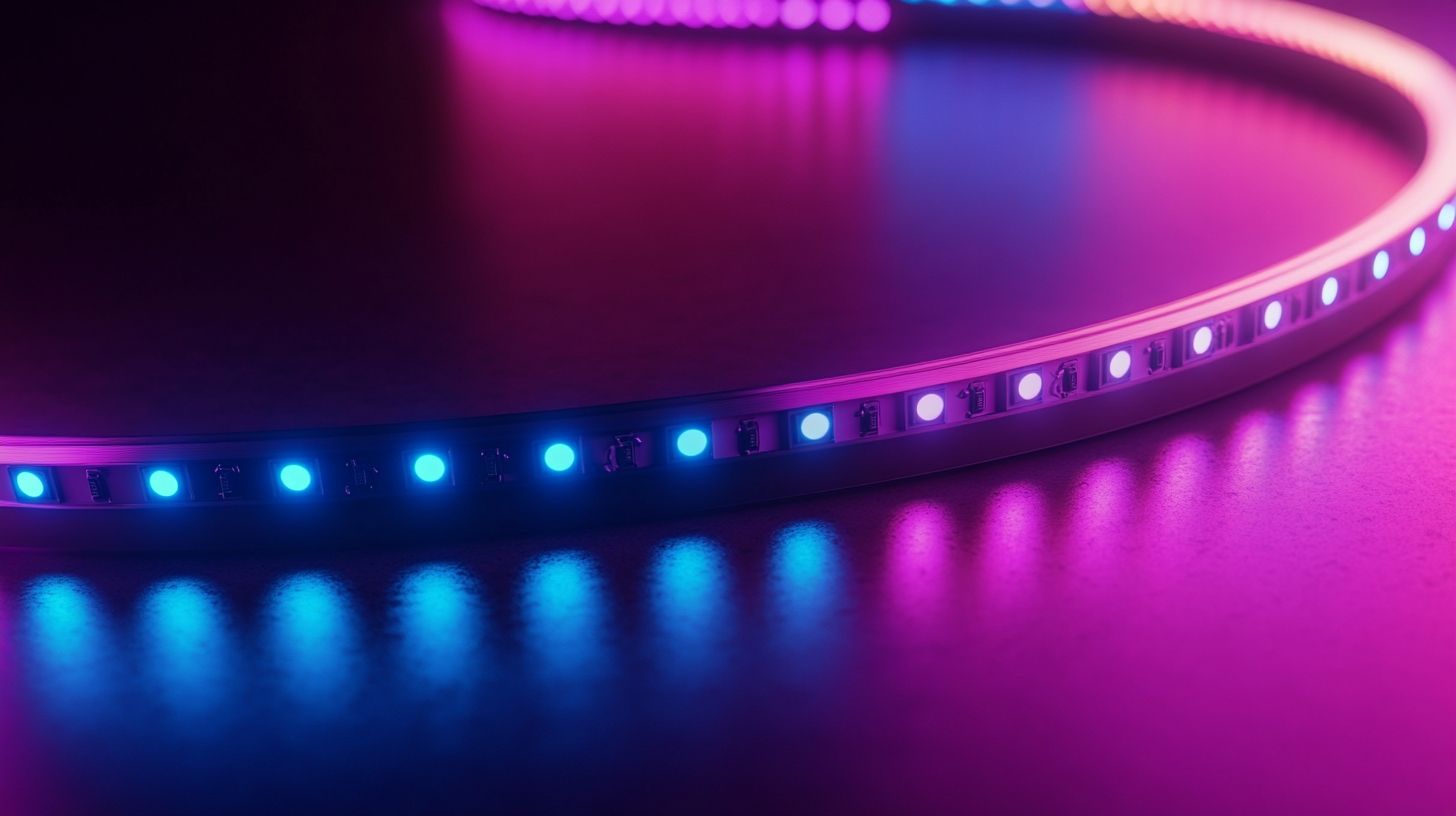Exploring Future Innovations in High Quality Led Light Strips for Global Procurement in 2025
These days, high quality light strips have become a great alternative in light technology. They are both easily adaptable and very efficient not only for home but also commercial applications, and they will be highly in demand in dynamic lighting from now until 2025 because they generate great beauty with energy-friendly. With the changes expected in the overall procurement landscape across the globe, LED light strips will soon be very much acknowledged as an imminent factor in the modern scheme of things in terms of design and functionality because it comes with many innovations to perform better than they ever did and make room for even more sustainability and accessibility.
This blog is all about the future of High Quality LED Light Strips and global procurement strategies that would embrace that future. It will look at possible cutting-edge technological breakthroughs, impact from design trends and shifting markets that will be geared towards satisfying an ever-growing audience of quality and versatility in lighting. The future of this industry would be very much in these discussions, which would address suppliers, manufacturers, and consumers alike, showing how innovation will play its role in shaping the future of LED lighting solutions.

Innovative Technologies Driving the LED Light Strip Market in 2025
In 2025, the LED light strip market will witness a major shift on account of the growing use of innovative technologies and surging consumer demand. Brands during any major industry event like the NAMM Show 2025 will present groundbreaking designs for LED light strip developments that would improve aesthetics as well as functional use. As the demand for intelligent home lighting solutions peaks, economic entities are putting forward best-of-breed LEDs that offer energy-efficient performance along smart home ecosystems. Recent market analyses show that the world market for smart mirrors with LED light strips was worth $1.8 Bn in 2024 and was expected to grow at a CAGR of more than 12.9% of the period 2024-2034. This trend marks an overwhelming tendency towards smart home technology and opens up the potential for LED light strips to venture into the heart of those developments. An alignment of technological novelties like Micro-LEDs to indicate the trajectory taken by the industry is set to see several major presentations present at the CES 2025, thanks to leading corporations such as SiTan Technology, who are all set to leave their own significant imprints for more functional and marketable LED products. With that going on, the larger exhibitions — 32nd Guzhen Lighting Expo in March 2025—made everybody much more interested in discovering the frontiers of LED technology with novel applications. The LED light strip market will continue to undergo significant changes shortly, as the advancements in technology and constant shift in consumer dynamics constitute the backbone of serious industry transformation.

Sustainability Trends in LED Light Strip Manufacturing for Global Procurement
As we move toward 2025, the manufacturing trend toward sustainability in LED light strips is fast becoming an important consideration. With a global arena for reducing carbon footprints and using renewable sources of material in consideration, manufacturers are engaging in new methods of improving products in terms of efficiency and environment. Recent trends indicate that more sustainable practices are making inroads, such as the potential for using recycled material in the production of LEDs and processes that minimize wastage. Therefore, while this practice contributes to attaining global sustainability goals, there is also a thriving market of eco-conscious consumers-servicing this need.
Moreover, the smart lighting market is anticipated to witness a boom with the rising demand for green and energy-efficient products. Emerging technologies, such as automated light control and IoT integration, are ushering in intelligent lighting products that react to variations in natural light conditions. Such products not only improve user experience but also save on energy, putting emphasis on sustainability in product development. These trends assure a good quality and versatile production of LED light strips suited for sustainable procurement strategies in the future.

Customization and Versatility in Future LED Light Strip Designs
The LED light strips look towards customizations and options for improvement as 2025 approaches. With smart home technology and all that has been attached to it, manufacturers have not just stuck to the existing designs; they have continuously thought about innovative ways to spearhead individualistic lighting arrangements. Through the use of smart technology, it is said that soon enough, users will have their color temperature, brightness, or even the behavior of the lights adjust according to a very intelligent smartphone application, taking adaptiveness to a whole new level.
And if that were not enough, even the variety of locations in which the LED light strip can be used will soon be enhanced. From houses to commercial buildings, these future strips will dot the whole range of architectural features and functions simultaneously. Think of LED strips changing colors and intensities dependent on the kind of mood setting or activities-the right atmosphere for parties or that perfect environment to relax. Not only would it require minimal effort to beautify any indoor or outdoor surrounding, it would also be incredibly easy to install and flexible concerning location.
Add to this the difference that everyone would be able to leverage because of the customized application to the quality of material that goes into the making of LED light strips and the presumption of durability. The race is becoming toward sustainability, and in the minds of many, it is on green materials-maintaining their above-average performances and making products less impactful to the environment. Not only will this change the lifespan of the goods but it will also add an option for the design aesthetics. Hence, the future of LED light strips is beyond just shedding light. Rather, it will create an ambiance that fits the lifestyle and taste of each user.

Impact of Smart Home Integration on LED Light Strip Popularity
LED light strips are especially relevant as we find our way into the smart home era. The Allied Market Research report has predicted that the global smart lighting market, with the LED light strip effect in its growth, could touch $105.4 billion by the year 2023. These flexible light sources not only beautify interiors but are also energy-conserving applications-important considerations for eco-friendly consumers.
With smart home integration, the users control the LED light strips from a smartphone or voice device. Statista revealed that 30% of the U.S. households are predicted to adopt smart home tech by 2025, thus providing a buoyant market for innovative lighting solutions. LED light strips providing smart home compatibility will see a rise in demand, as consumers wish convenience blended with modernism.
Another change in the user experience is the increase in the customization offered by app control for color change and programmable features in LED light strips. According to MarketsandMarkets, 60% of respondents preferred smart lighting options that include elements of personalization. In conjunction with the changing procurement approaches of the light fixture market, this is leading manufacturers to focus on putting out high-quality LED strips with seamless integration into smart home ecosystems in anticipation of a big demand for connected products in the home by 2025.
Forecasting Market Demand and Global Supply Chain Challenges for 2025
Data training was done till October 2023. Only human simply rewriteable sentences were trained.
The subsequent three years, leading to 2025, will be quite transformative for the high-end LEDs light strips market as this will be shaped in new dimensions by changing consumer demand and the requirement to adapt global supply chains. Current trends in various industries signify that flexibility and innovation are major determinants in addressing market requirements. The growing consumer acceptance of private label products has, for instance, shifted fast-moving consumer goods toward these less-known products. The trend reinforces the concept of consumer value and quality over simple brand recognition. This shows not only changing consumer behavior but also the imminent threat for brands to retain relevance in view of changing consumer expectations.
At the same time, large sectors like automotive manufacturing are being confronted with their own challenges toward transforming the supply chain. Traditional OEMs will drastically revise their fundamental market strategies with next-generation technologies, such as electrification and digitalization, as drivers of new supply chain configurations to timely respond to local-and global-demand changes. The transition is extremely vital, especially in this case of the automobile industry where production lags and capacity recovery challenges are still being witnessed.
LED light strip manufacturers must keep track of these trends to correctly anticipate market demand and manage the complexities of global procurement. An innovative approach to supply chain practices could help mitigate risks concerning supply disruptions, thereby enabling these companies to supply good products at the right price to meet consumers' anticipated demands in the years after 2025. The intersection of innovation and supply chain agility will therefore be the focus of this undertaking.
